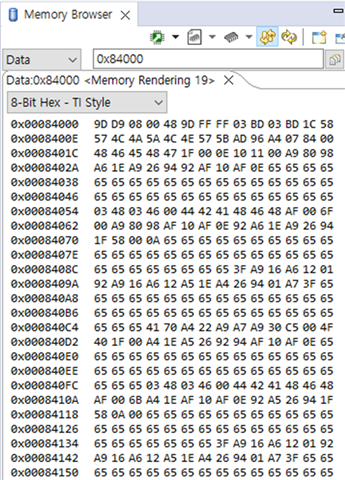Tool/software:
I am using the TMS320F28384S and developing a bootloader program, but the program does not jump after performing a flash download.
Issue
Using the same bootloader program, if I write the program using the debugger, the jump works normally. However, if I write it using the bootloader, the jump does not occur.
Normal Operation
1-1. The APP program is directly written via the debugger (starting at 0x84000).
1-2. The bootloader program is directly written via the debugger (0x80000, only using sector 0 and 1).
1-3. In the bootloader, the APP program jump is made to the address of _c_int00.
1-4. The program jumps normally.
Failure Case
2-1. The bootloader program is directly written via the debugger (0x80000, only using sector 0 and 1).
2-2. Using SCIA, the HEX file is written to flash starting at address 0x84000, using the Fapi_issueProgrammingCommand function.
I have added the following hex file options:
-map=sections.txt --entrypoint=_c_int00 --memwidth=16 --romwidth=8 --order=LS
2-3. In the bootloader, the APP program jump is made to the address of _c_int00.
2-4. The program does not jump.
Points Checked / Questions
When comparing memory contents after writing with the debugger vs. writing with the bootloader,
the 8-bit Hex - TI Style view in the Memory Browser looks identical.
However, the 16-bit Hex - TI Style view shows differences. Which one should be considered correct?
Since the same bootloader is used, can we assume the program jump code itself is correct?


